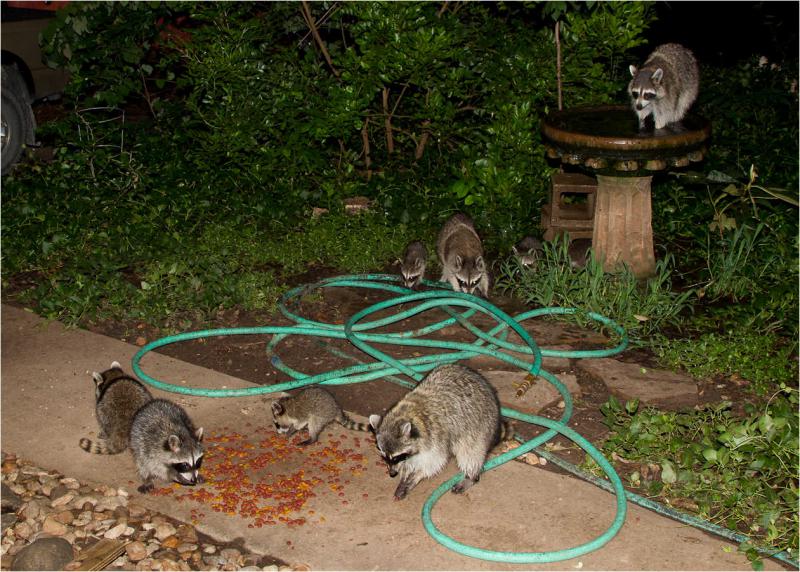Click on image for larger version.
![]() Previous image 1 - 7 of 173 Next
Previous image 1 - 7 of 173 Next ![]()
Austin's urban raccoons have been well know by denizens of the night for decades as these shadowy creatures raid rubbish bins and dog and cat food bowls left out in back yards. Rarely seen in the daytime, almost never seen killed in the street, their highways and byways are the storm drains, safe passage that empty into the local waterways winding their way through greenbelts and parks, the raccoons natural habitat.
But the females sometimes take residence in the attics and woodpiles of Austin's human residents. And they do love to raid one's fruit trees, and dig for grubs in the garden. Thus arises another conflict between man and nature. I'm under no illusions. The little rascals can be a pain in the neck. A soon to be mother raccoon is relentless in her quest for a den. She can tear a hole in the roof. She can find a way into a hidden nook in the garage if she needs a place to have her young. But as even the exterminators are wont to say, 'just leave her alone for awhile, if you can. She'll move on in a few weeks.' If you find yourself in such a situation best to leave her alone. And leave her a way in and out. The last thing you want are dead raccoons in the walls. She'll move her young as fast as she can, especially if she's been discovered. ...unless you feed them.
This is how we came by our little families. Harmlessly enough they use the area behind the firebox for the fireplace in the living room to raise their young. The ash clean-out door is their first window on the world. Generations have grown up there now. We stopped using the fireplace years ago. We have become used to refreshing the birdbath every morning from the layer of mud they'd left behind as they bathed. Seeing how much they loved the water we even supplied small pools for them. They're turned into mud holes every morning now.
It was seeing the remarkable behavior of a mother raccoon and her kits in our front yard that inspired these photographs. This summer of 2010, as I coped with healing from the setbacks of knee replacement therapy, I decided to turn my nature photography to subjects nearer than far. The following pictorial essay is the story of Coontopolis.
.








